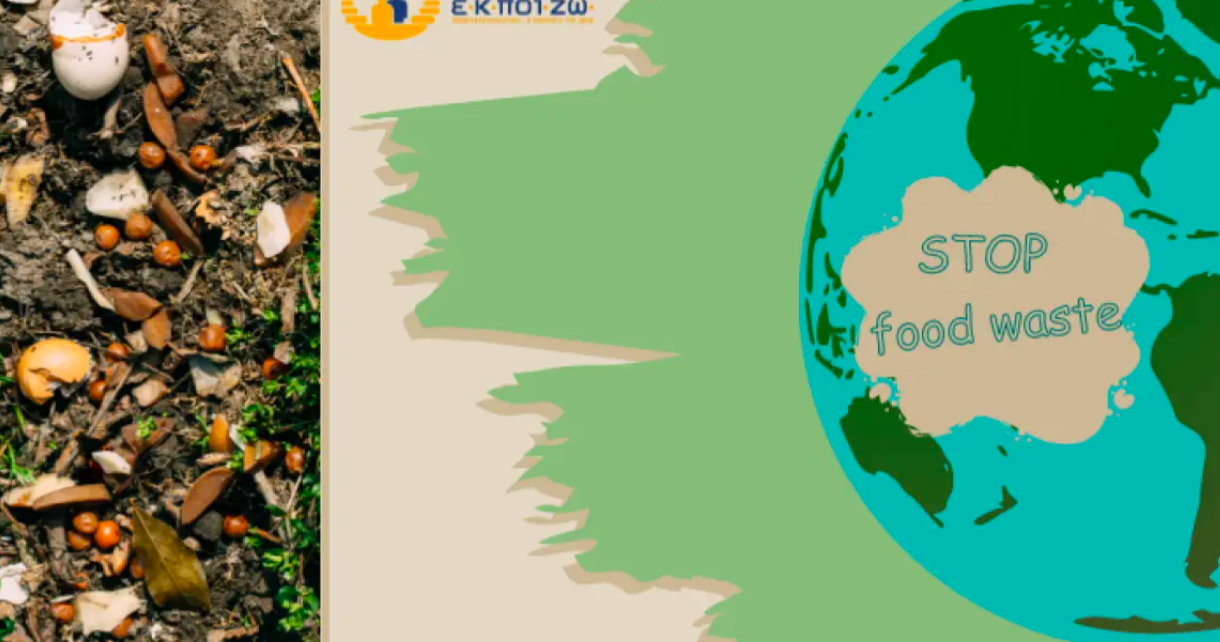The European research project EXCEL4MED, in which the Consumer Union for Quality of Life (EKPOIZO) participates, aims to address the climate and food crises through circular economy principles, scientific knowledge, and innovative technologies. This project connects stakeholders from academia, the food industry, civil society, and local governments across Greece, Malta, and France to collaborate on producing innovative, more nutritious products using environmentally friendly technologies.
The goal is to naturally extract antioxidants and other beneficial health substances from citrus and pomegranate waste (such as seeds and peels) without using chemicals, incorporating them into foods like brined white cheese and smoothies to create new, enriched, and more nutritious items. Additionally, juices with low natural sugar content are expected to be produced.
In combating food waste and the impacts of the climate crisis, EXCEL4MED seeks to utilize food industry by-products that would otherwise end up in landfills and transform them into new, health-beneficial products.
EKPOIZO reminds the public that September 29 has been designated by the UN as the International Day of Awareness of Food Loss and Waste, aiming to raise global awareness. According to the UN’s Sustainable Development Goals, food loss and waste should be reduced by 50% by 2030.
However, addressing this issue requires a holistic approach that involves action from various sectors, including the food industry, retail, food service, and households.
To help households contribute to reducing food waste while saving money, EKPOIZO has posted a video with tips on its website.
EKPOIZO emphasizes that, according to data published by the UN in its 2024 report, over one billion meals end up in the trash every day. In 2022, while 29.6% of the global population experienced moderate or severe food insecurity, up to 783 million people suffered from hunger, while the world wasted 1.05 billion tons of food.
“The loss and waste of food is a serious social and environmental problem, and addressing it is imperative to ensure a sustainable future for all of us. At the same time, it presents an opportunity to combat the climate crisis and address food insecurity,” states the UN report.
Understanding Food Loss and Waste: What’s the Difference?
The term “food loss” refers to the production, harvesting, and supply chain stages until products reach supermarkets. “Food waste” occurs during retail and consumption.
Scale of the Problem in Numbers:
According to the Food and Agriculture Organization (FAO) of the United Nations:
- About 14% of food produced for consumption globally each year is lost between harvesting and wholesale.
- It is estimated that 17% of total global food production is wasted (11% in households, 5% in food services, and 2% in retail).
Food Insecurity
Additionally, EKPOIZO highlights that, according to World Bank estimates (2020), more than $1 trillion worth of food is wasted annually. This figure is alarming, especially considering that hundreds of millions of people worldwide are already undernourished, while future global population growth is projected to require even more food—an increase of 3 billion people in the next 30 years.
While humanity faces food insecurity, one-third of all food produced globally each year—1.3 billion tons—is either lost or wasted, according to the UN Environment Programme (UNEP) report (2021). This food could potentially meet the needs of those experiencing food insecurity, particularly in severely affected areas such as many subregions of Africa, Latin America, and Western Asia. Food insecurity is also tied to economic access, where high prices and low incomes prevent access to healthy food and necessary calories and nutrients.
Could reducing food waste lead to more available food, thus lowering prices and making food more accessible for economically vulnerable households? In international literature, reducing food waste is presented as a means to tackle food insecurity (World Bank, 2020).
Environmental Footprint
The environmental impact of food waste is severe. The increase in food waste contributes to rising greenhouse gas emissions, depletion of natural resources, and loss of biodiversity.
Food loss and waste produce 8-10% of global greenhouse gas emissions, utilize about 30% of global agricultural land, and lead to biodiversity loss, as noted in the UN report. Farms alone account for 13% of total emissions.
According to the FAO:
- Lost and wasted food represents 38% of total energy consumption in the global food system.
- Food system emissions contributed to up to 34% of total greenhouse gas emissions in 2015.
- Packaging accounts for about 5.4% of emissions from the global food system, more than any other logistics factor, including transportation.
The World Bank warns, “Food produced but not consumed is estimated to produce 3.3 billion tons of greenhouse gas emissions. If food waste were a country, it would rank as the third-highest emitter of greenhouse gases after the US and China” (2020). Reducing food waste would decrease both greenhouse gas emissions and the land and water usage involved, as a portion of production goes to waste even while being produced. Furthermore, it would help reduce methane emissions from organic waste going to landfills, as the UN report points out.
Ask me anything
Explore related questions





